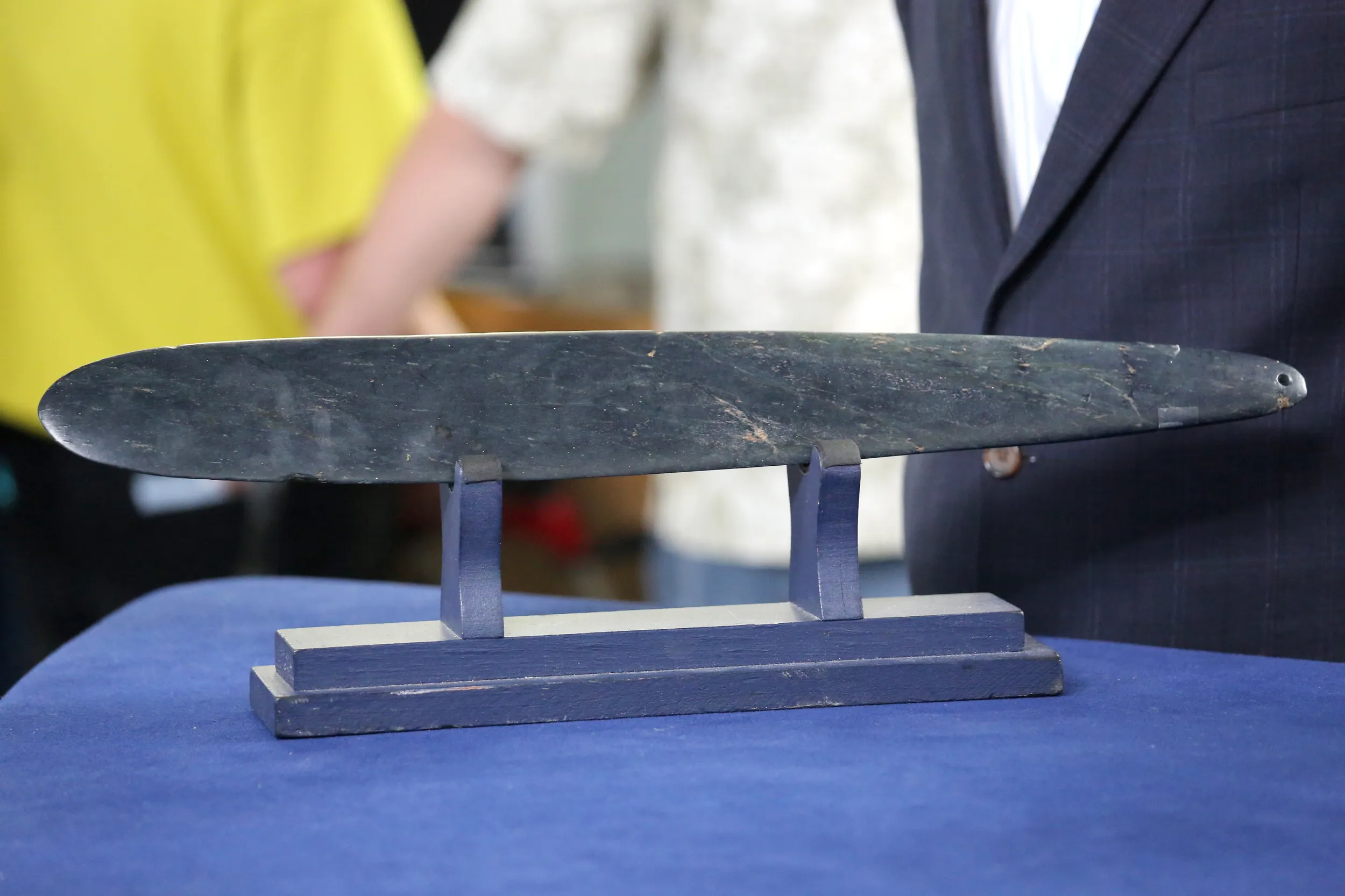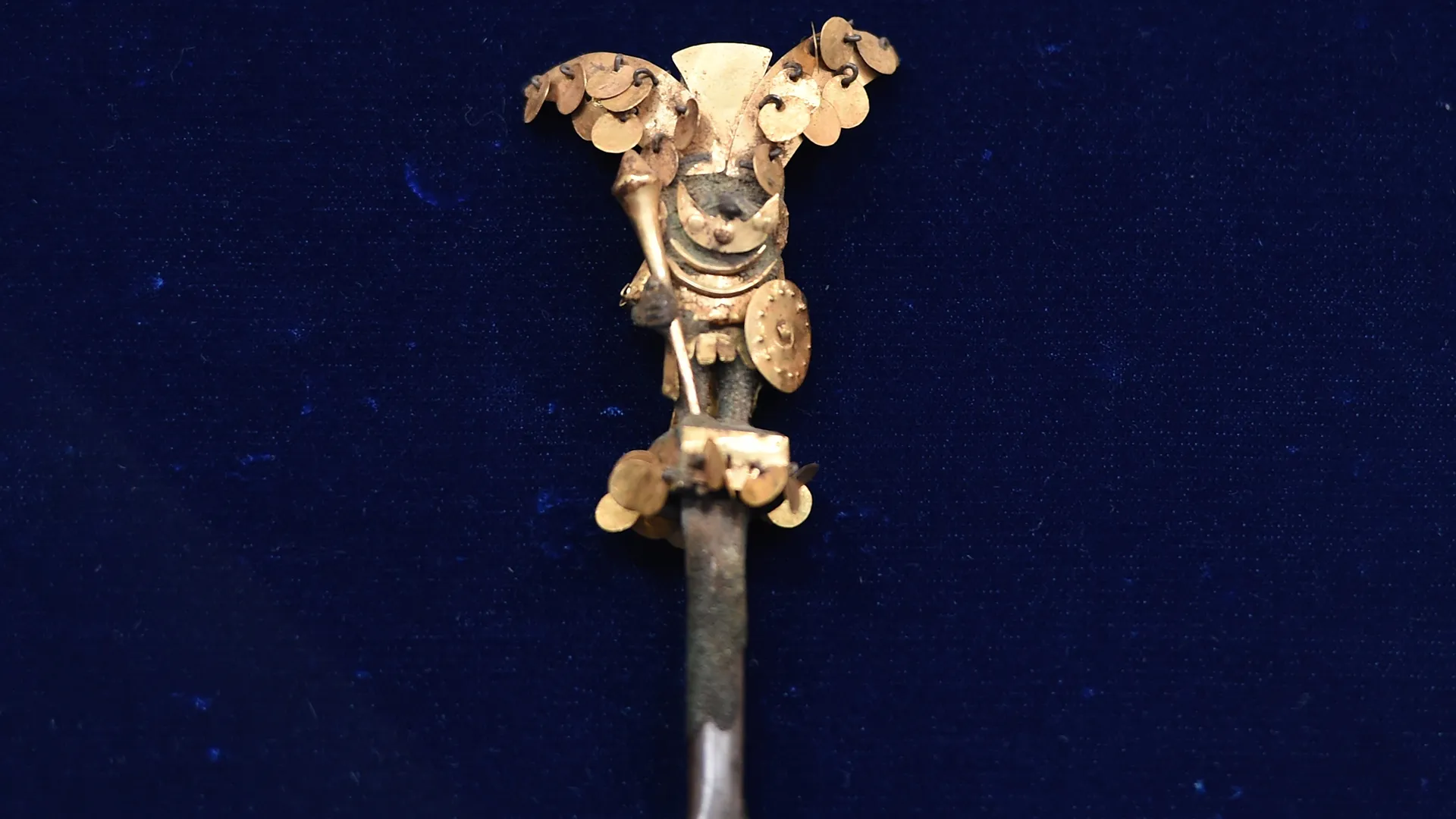GUEST: My family grew up in South America. We lived in Lima, Peru. My father was a geophysicist, and he appreciated archeological items, and items of primitive art.
APPRAISER: What were the dates that your father lived in Peru?
GUEST: We were in Peru from ’57 to ’66.
APPRAISER: ’57 to ’66, so then the collection process started in 1957 or so?
GUEST: Yes.
APPRAISER: We have to be concerned that these came out at a time that it was legal. The dates that you described, and we were very definitive about the dates. This was prior to any issue with the UNESCO Convention, which was 1970, it was all before that.
GUEST: Yes.
APPRAISER: There certainly are indications in what's happening in the Peruvian marketplace right now, that some people are more aggressive about trying to get things back. Now in your case, where you have proof that they were acquired much earlier, that's really good. So I think that we're covered. What I'm gonna do is I'm gonna give you some homework. The process of authentication in this case, is gonna start with a gold test. The second thing that we want to do in this process, is we look at it stylistically. Do these things make sense for what they're purporting to be at this time period in this country? This gold here is, as you said it's all from Peru. Most of it is from the North. Assuming that it's gold, we have gone over, and we feel comfortable stylistically. Then the last thing that I would do if I could examine it by hand, is I'd have an expert go over each piece, and make sure that nobody restored it, nobody made a repair, That's really important on value. It's a segment, it's a little bit frustrating to me, because I wanna claw my way through this glass, and pick it up and sniff it, and lick it and, you know, find out exact-
GUEST: Don't do that.
APPRAISER: I won't do that, thank you. In my judgment, the dates are pretty varied here.
GUEST: Okay.
APPRAISER: I think this material is earlier. I think this could be before the birth of Christ. These things are a little bit later. Even the later ones, I don't think are any later than about 800 AD. It's really early material.
GUEST: Wow, wow.
APPRAISER: I think almost all of this is personal adornment. That would be in some way, it would be either attached to costumes, it would be strung around the neck, and even this could've been sewn on a costume, or it could've been used in some sort of, like a shrine piece or in a burial, that's possible. It is some sort of a deity. You can see that it's holding sort of a scepter. That is a symbol of power and status. These are actual burial masks.
GUEST: Are they?
APPRAISER: And they're probably made out of tin. Clearly this is a necklace. These are beads. These would have been unbelievable necklace strung around someone's neck.
GUEST: Okay.
APPRAISER: I think these might also be beads. I can see on these little tiny containers here, they're beads, there's holes in the back of them, so you have an amazing collection of personal adornment. This is worth some money. A conservative price for this, assuming that everything that I said is legitimate, conservatively you're looking at $50,000 to $100,000 dollars.
GUEST: That's incredible.





